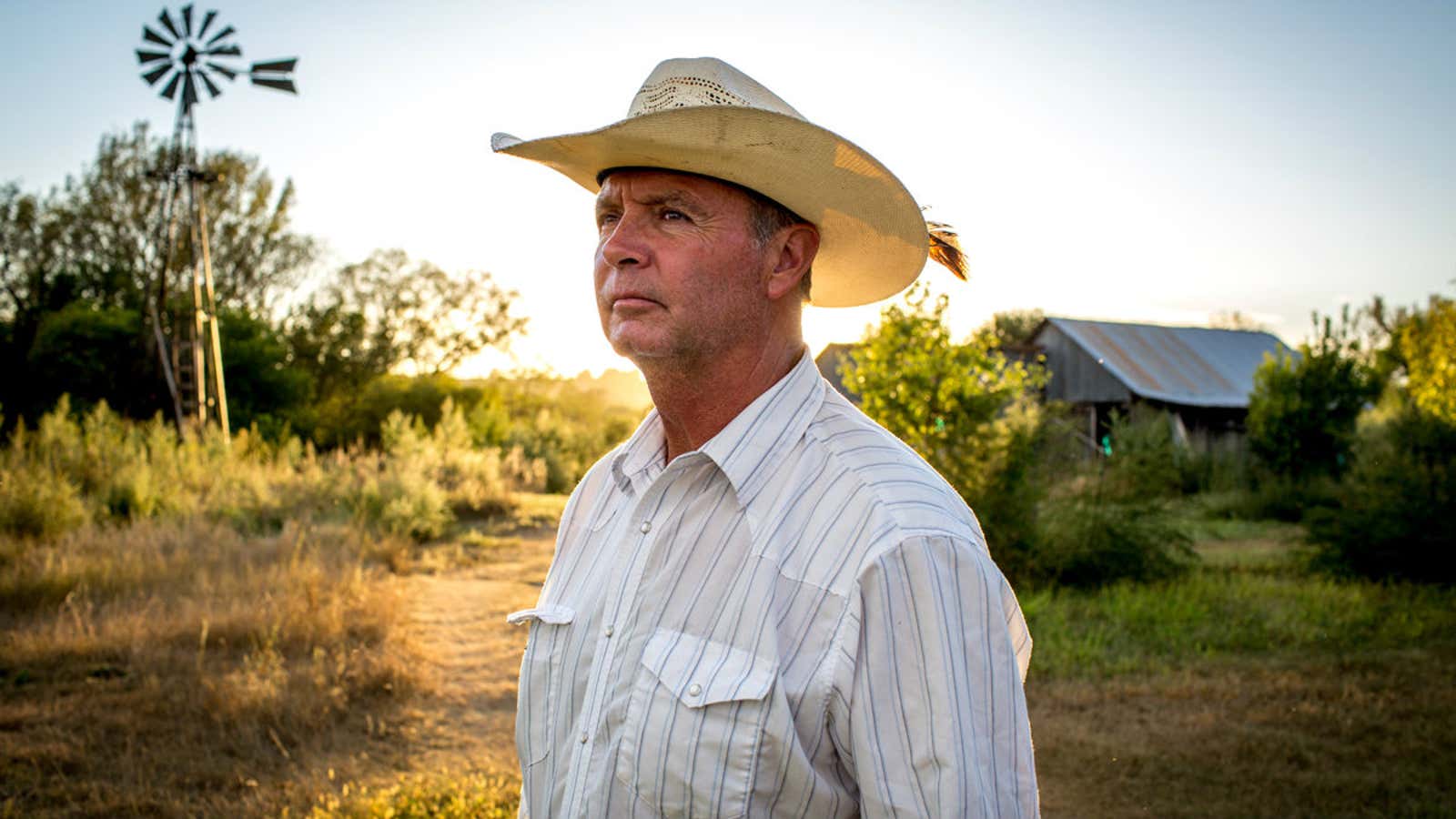Ted Genoways wants to challenge your thinking about the people growing your food. Counter to popular wisdom, not all farmers are either 1) selling organic tomatoes at your local farmers’ market or 2) running massive corporate operations.
In his new book, This Blessed Earth: A Year in the Life of an American Family Farm, Genoways chronicles the trials and tribulations of a third kind of farmer. Rick Hammond grows conventional corn and soy and raises cattle in eastern Nebraska with his daughter and son-in-law. He’s not your typical 2017 farm hero, but, as Genoways artfully illustrates, Hammond is working hard to pass his farm on to the next generation against the odds. And the myriad challenges family farms like his face—from unstable prices to a diminishing water supply and increasingly erratic weather—are worth our attention.
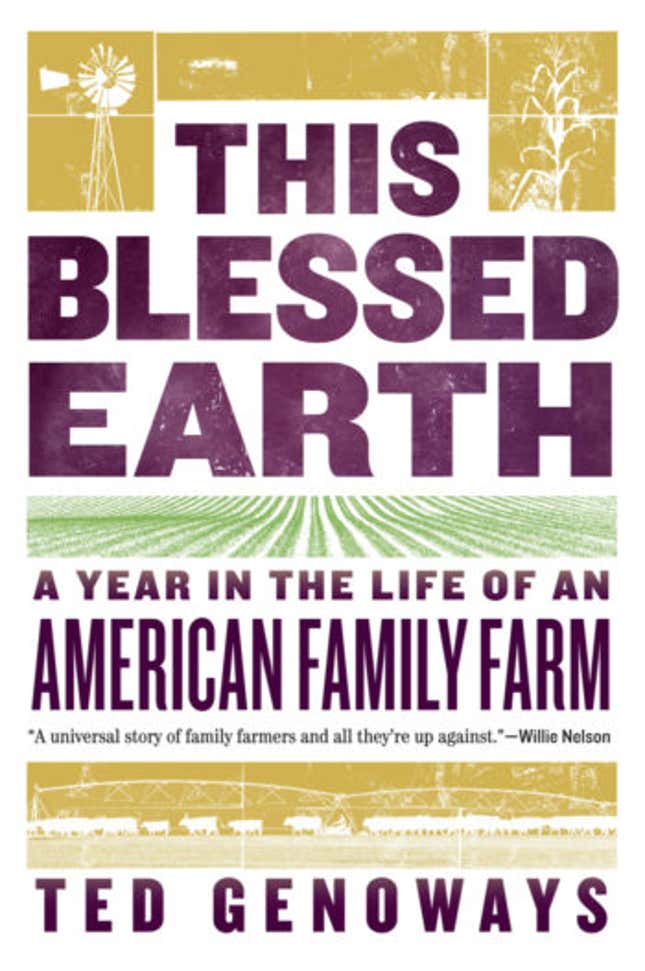
As Genoways wrote recently in a reflection on the book, a “sea change in consumer habits” has arisen over the last two decades. But, he began to ask, “Is all of this really helping family farmers? How do they feel about a food movement that lionizes ideologically-driven operations like Joel Salatin’s Polyface Farms, the pastoral curmudgeon made famous in Omnivore’s Dilemma, and vilifies generations-old operations in the middle of the country, where many farmers have no choice but to raise commodity grains—principally corn and soybeans—just to keep their families afloat?”
Civil Eats talked to Genoways recently about the Hammonds, the changing face of rural America, and the role that in-depth local reporting can play in holding agribusiness interests accountable to their communities.
Maybe we should start by talking about the term “family farm.” Can you talk about how you define that?
The US Department of Agriculture (USDA) classifies something like 97% of American farms as “family farms.” And so in that context the term essentially means that the person who owns the farm has a family. And many large operations that I’ve dealt with over the years that started out family-owned have grown to the point where the families that own them may only rarely actually visit the land.

So, when I talk about family farmers, I really mean in the old-fashioned sense—a nuclear family that is living on a farm that they operate with little or no hired assistance. Typically, they are doing it on land that they have some sort of longstanding connection to. And everything is about protecting and sustaining the land at the center of that universe. That’s something that is—at this point in history, especially in the Midwest—quite unusual.
I was interested in how the real family farmers are hanging on. And in how they’re doing so at a point when, for almost a generation, there’s been an enormous amount of pressure to either go corporate or go do something else.
Can you say more about what “going corporate” looks like?
It has to do with the size of the operation. [It means] acquiring enough land that you start to have some economies of scale, but you also then require employees. I have reported on operations that describe themselves as “family farms,” but have operations that are spread across seven states. They have hundreds of employees and have operations that include row crops, feed mills, hog barns, and packing houses.
So closer to a vertical model?
That’s right. There is an attempt to vertically integrate and to diversify across regions to insulate [themselves] against weather and some of the vagaries of the local markets. And essentially you’re getting large enough that you have some protection. And that, to my mind, is where the corporation really comes from.
I understand that instinct. I’m not as knee jerk anti-industrialized agriculture as some people are. I certainly have many reservations about what tends to come along with it. But I don’t feel any particular romance for the difficulties or the risks that come from trying to operate a small farm. And that’s exactly why I wanted to focus on those kinds of farmers and in the context of what has happened with the food system itself for over a generation now—as everything is pushing toward that industrial model—but I also wanted to look at the kinds of pressures that have been exerted over the last decade by people like us who have some questions about that industrial model and some reservations about it. And I think many farmers [see those questions] as personal critiques and register them as yet another threat.
Let’s back up and talk about the larger urban-rural divide that has been made especially clear since the election. Do you hope This Blessed Earth can bridge any of that divide?
My interest is in trying to make sure that when we talk about how to reform the food system we’re not doing so in a vacuum or based on some sort of received wisdom about what’s happening on the farm.
I also think that Nebraska, where the book is set and where I live and have had family for generations, is an interesting example of what happens in many of these Great Plains and Midwestern states, which tended to be settled along the rivers. All of the population clusters on one side and then the rest of the state is left open for agriculture, which historically got brought in to those distribution centers along the rivers. But what that means is that every one of these states has major metropolitan areas on one side of the state and then vast areas that are lightly populated on the other. And, over the last 40 years, those rural areas have become less and less populated. And so within each state there ends up being two different states.
And I have certainly seen over my lifetime this intense and growing suspicion of the urban part of [Nebraska] from the people who are in the rural parts of the state. And I think some of that is exacerbated by the loss of small-town newspapers and the consolidation of schools—losing that individual identity and the sense of community and conversation that took place in those local venues. And it’s all been replaced by talk radio on the AM radio in the machine shop, or by Fox News, which is on TV at home and in the coffee shop.
I think many of these more isolated rural places have ended up feeling more connected to a national politics and a national rhetorical debate than they are connected to people who may only live a couple of hours away from them but in a [more urban] environment. I would also hope that [this book] encourages people in urban areas to recognize some of the work that they need to do to reach out to rural areas and include them in some of the progress that has occurred in cities and not leave rural areas behind.
As you mentioned, there has been a lot of critique of conventional farming and farmers who sell into the commodity market in recent years. And there are people in the Midwest now growing organic and non-GMO foods—either out or conviction or because of consumer demand—but it’s not anywhere near as simple as just deciding to change. Can you say a little bit about that challenge?
Yeah, absolutely. I think one of the real mistakes of the food movement has been to assume that we can reshape the food system simply by buying non-GMO corn chips or Animal Welfare Approved chicken. The reality is that if there’s not a mass movement among consumers, all that that really does is create niche markets. And niche markets may help some farmers who have the means, the know-how, and the ambition. But, right now, the premium that can be commanded for those things is not adequate to offset the risks and expenses.
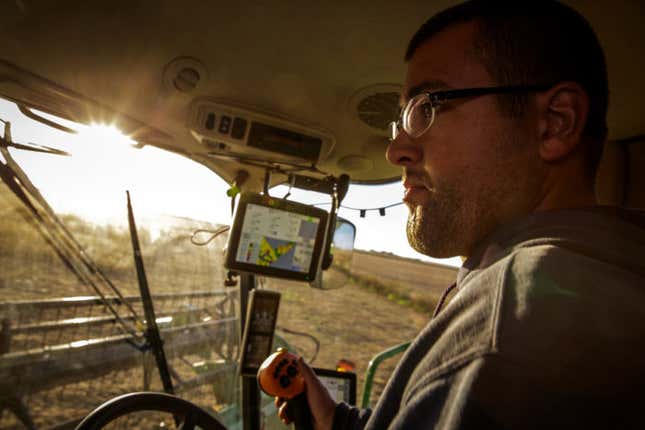
For people who have an emotional connection to the farm, their first commitment is to their family and to their legacy. And from there whatever they can do to produce something that they feel good about being sent out to the consumer, they definitely want to do it.
But I think it’s important to recognize that when somebody says, “Why not go organic?” It is no different than any of us being asked: “Why don’t you do everything in your life and in your profession in a different way than you’ve always done it?”
And even when that may be good advice or good for us collectively, trying to make that change individually is hugely challenging. And the way you can get that to happen is not by [making different consumer choices]. The only way that that’s really going to happen is by changing the incentives at the macro level and that’s about government regulation, and the incentive we build in to government programs.
And so if people care enough to pay extra for non-GMO or organic food, then they should be looking into which candidates would actually push for those sorts of changes and put their support behind them. At a moment when the next farm bill is being crafted and the USDA is being staffed with people who have little to no expertise, it’s really critical to recognize that these things don’t take care of themselves.
Do you want to talk about the Keystone XL pipeline—and the role that it played in the year you spent on the Hammonds’ farm? At a time when many farmers in that part of the country seem to feel more competition that neighborliness, do you think the pipeline helped bring them together?
I saw places where were families and neighbors were divided based on their feelings about the pipeline. But I also saw this group of farmers and ranchers from up in the Sandhills who have banded together to be the wrench in the works for close to a decade now. And that is just remarkable to me. They’ve been holding out long enough that now TransCanada is saying, “Well we’re not sure that the numbers work out for building this pipeline in the way that we had originally proposed any more.” And with another project that they looked at as an alternative—the Energy East Pipeline, which would have gone across southern Canada—they’ve said that they fear that they would encounter the exact same resistance trying to build that project.
Rick Hammond really thought that there was no choice but to sign the initial easement agreement with Trans-Canada and instantly regretted it. And then Trans-Canada moved the route and said, “we’re no longer going to build the pipeline across this piece of land.” But Rick farms another piece of land that belongs to his family members. And they refused to sign, and they have held out on allowing any construction on that land. In fact, that’s the land where they erected a solar-powered barn that is directly in the path of the pipeline.
Rick Hammond has family in place—his daughter Meghan and her husband Kyle—to take over the operation. But that’s unusual these days. Will you talk about what you see the next few decades looking like in Middle America for farmers?
It’s a really bleak outlook in terms of that very issue. Succession is the thing that you hear all the agricultural groups worrying about the most, because they have the perspective to see that the farmers are advancing in age and at the same time land values, overhead costs, and equipment costs are going up…So the only people who can really get into farming as young people these days are those who are inheriting land, homes, and equipment. And I have a hard time understanding the young farmers who commit to staying on the land. Because even a small operation is now worth millions of dollars in land and equipment and everything that goes with it. To be presented as a young person with the choice of, “you can sell this off for millions of dollars and go do whatever you want with your life…”
Or you can make $25,000 a year if you’re lucky.
Right. And you’ll be working 12-15 hours a day. And [the ag landscape] is going to be constantly changing. The technology is going to be new. The climate is going to be new. It’s going to be a daily struggle. And the people who are inheriting operations for the most part have parents and even grandparents who are right on top of them—sometimes on the same property.
And they have strong opinions.
Yes, they do. And they don’t keep them to themselves very often.
To make the choice to stay and do all that work for all of that risk and to have all of that family pressure? I’m not sure that I could counsel anyone that that’s the wise choice.
But this is where that notion of the family farm comes in. Meghan is the sixth generation on the Hammond’s farm. And they’ve been there since the 1870s. And now Meghan and Kyle have had a baby; the seventh generation has been born on the land. The reasons for staying very often are not wise financial decisions. They are about being part of something that is long and historic and meaningful to the family.
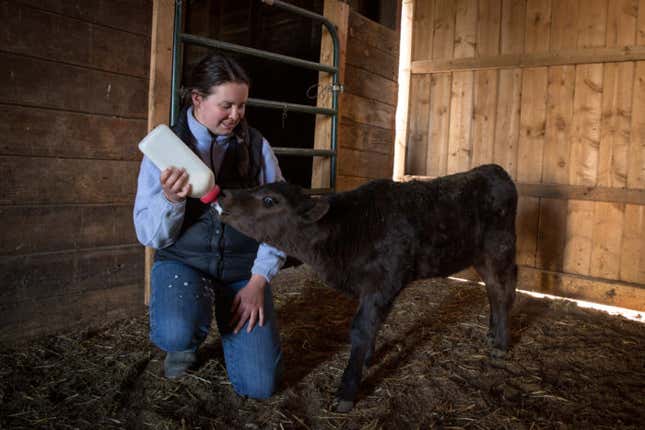
And the thing is all this contraction really started in the 1960s—after 50 years, the farmers who are left are the die-hards. That makes it even harder for the rising generation to let [the land] go because it has been fought for their whole lives. And it’s a fairly common thing these days that you have siblings who have equal shares in a farm, but don’t have equal labor being put into it. And naturally that creates friction.
Before writing this book, I knew that there were people who specialize in farm succession planning. But I learned that there are also psychologists dedicated to it as their practice.
Do you want to talk about the precision involved in soy and corn farming these days? In many ways it has become a high-tech job.
Yes, it has become an incredibly technical job at every stage of the operation—from selecting seed to deciding the seed density (where the seed is planted and how close together) to deciding about how much water to apply to a field and where and when. It’s also a matter of collecting harvest data and entering it into a system that is then returning information about how everything performed. And you’re often looking at data sets that are a decade-long and making predictions for the next year.
Most farmers don’t have just one type of crop on their fields, but even if you were just talking about soybeans, most farmers are planting different varieties in order to spread out the risk. And making those kinds of decisions and then keeping track of what you’ve decided in any given place and then of course all of the financial calculations if there’s hail damage, drought damage, or loss to insects…and no, I don’t think the average consumer has any idea about any of that.
At the same time it is a lot less labor.
No question. A lot of the physical labor has been mechanized out, which means that there are fewer people involved in the operation. But I think that this has also made farming much less of a social activity than it used to be. There are far fewer people involved in operations and that’s also contributed to the dwindling size of rural communities.
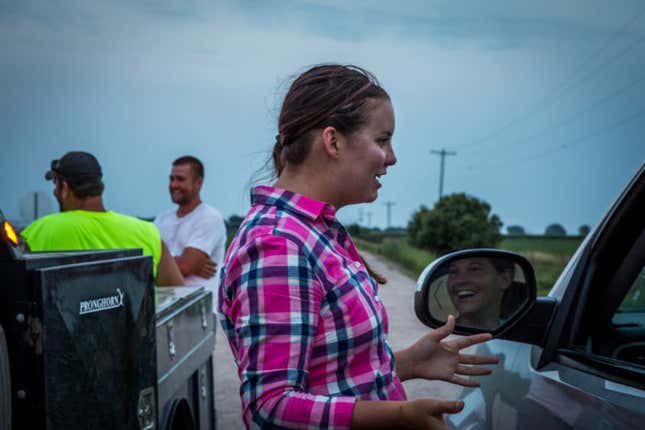
The psychological pressures and the mental and emotional pressures of farming have really soared. You’re not out there hand-husking corn and tossing it into the back of a horse drawn cart. But, to me, there is something almost more stressful about sitting in the cab of your John Deere harvester watching the color of the swath change as it’s telling you whether you’ve lost or made money for that particular row.
And the farmer suicide rates remain high in the Midwest as well, right?
Yes. And here in Nebraska, there’s been mounting evidence to suggest that those suicide rates may also be linked to some of the neuro-disruptors that have been used in pesticides. Just south of us, where the Hammonds farm, there’s a cluster of neurological disorders that is being actively studied. They’re trying to figure out why there’s a hot spot for Parkinson’s and other neurological disorders in this particular place.
Do you want to say anything more about solutions?
I really feel that the only way that the current system will be reformed is if top-down pressures change the sorts of incentives that exist for the businesses that largely control the industry—and the farmers who are under their sway.
And that means trying to reform the politics of many of these middle states. The progressives in these states—who have been essentially abandoned by national parties—need to have support. Because if we allow the state politics of the middle of the country to be controlled by agribusiness, then we’re never going to get elected leaders who are looking to regulate and reform agribusiness.
But that’s a tall order, especially with Iowa being at the center or national politics in the way it is.
Yes, but what’s fascinating is the fact that is the corruption that exists by way of pressure from big agricultural interests in Iowa is so out in the open it’s kind of jaw-dropping. And, again, this is where the decline of newspapers comes in. If there were people being paid to go out and be daily watchdogs on these sorts of things, I think that would it would be much harder for people to do.
If you really want to reform politics in the middle of the country, you’ve got to find the people who are doing the right work and give them money and then go home. But that is an awfully tall order, and I would just hope that the awareness-raising and the transformation of thinking [about food and farming] that has come into being in the last 10 years doesn’t turn into a kind of panacea.
It’s not enough to say, “I’m not contributing to these industrial practices, or I’m not contributing to climate change.” If what you’re doing has too little impact to be meaningful, I’m not sure it gets you off the hook.
This interview has been edited for clarity and length. This article originally appeared on Civil Eats.
